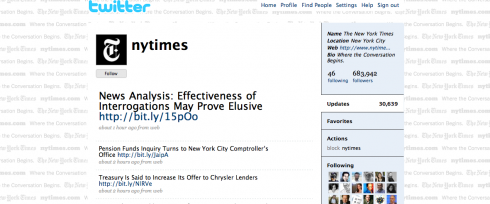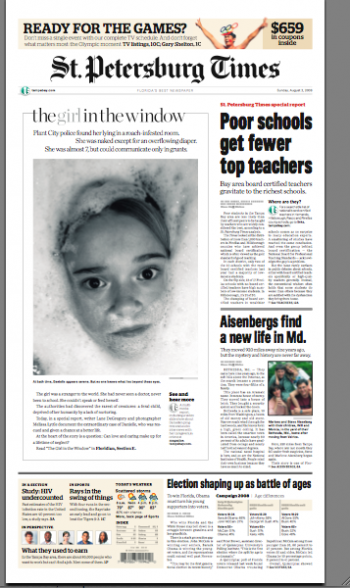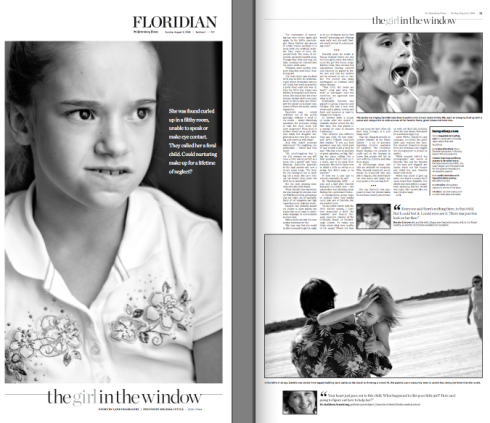Updated Thursday, April 23, 12:34 pm EST

Someone asked me two days ago: What really is Twitter?
My answer came easy. I think that Twitter is the biggest factory of autobiographies ever assembled.
And I repeat something that I constantly mention in this blog——amidst the pessimism of traditional journalists who see their craft evaporating right before their eyes: We storytellers have never had better tools to tell our stories, and Twitter is definitely another one. With Twitter, it is also a magnificent way to express thoughts, to convey news, or simply to keep up with those you know and follow, in a succint way.
This is beyond the traditional BRIEF or COMPACT story. This is the quintessential summary of a thought or an idea.
Here are some Twitter facts to make you a Twitter, in case you are not one already:
1. More than 20 million Americans go Twitter each day—-including a list of celebrities. Yes, President Obama Twitters. True, the 140-character entries run from the insignificant or mundane (“it is rainy, a good day for me to stay in bed with a book, and my cat”) to the more profound or philosophical (recent post: “Emily Dickinson would have been the greatest Twitter”). But there are good interactions between audience and editors for all media; there are life saving messages, where people Twitter in an emergency. It is, at its basic core, a good communicator. The spontaneity that it allows is what attracts me to it. Recently, during a break in a presentation for Romanian editors and designers, I turned to my iPhone to Twitter: “The issue of modular versus nonmodular design is big here.”
2. Newspapers and media outlets worldwide—-including CNN—have incorporated Twitter as part of their information gathering processes. In fact, the Ashville Mountain Xpress calls itself the first Twaper, or Twitter Powered Newspaper.
3. Twitter is being used by more media groups both as a channel to distribute breaking news alerts as well as as a way to monitor fluid news events like disasters and elections. The New York Times, among many top level publications, that have their own Twitter outlets.

4. Recently Oprah got the Twitter treatment and before she made her first Twitter entry, she had 30000 followers. She was devoting a full show to Twitter.
Does your newspaper Twitter? If not, get going. Most importantly, get journalists to Twitter. No better way to get interaction with readers. In Sweden, a majority of newspaper editors Twitter. Most write blogs as well, by the way.
TweetsByDesign
Personally, I see Twitter as a dynamic, hard to beat teaching tool, so starting today I will post daily TwittesByDesign, simple statements that most people in the business know, but which is not a bad idea to review, while having fun with Twitter. If you are an educator, I urge you to tell your students to Twitter with me and to follow me; if you are a practitioner, follow me, but also let me know what subjects you would like covered. I am sure I can keep the daily TwittesByDesign going, with your help and encouragement.
TwittesByDesign1 is already there. Follow me in this exciting new adventure.
The Girl in the Window: Pulitzer Prize for St. Petersburg Times


Pages from the St. Petersburg Times’ presentation of its Pulitzer Prize winning feature: The Girl in the Window by Lane DeGregory
In our blog yesterday we mentioned our pride with Pulitzer Prizes for two Florida newspapers with which I have close ties, The Miami Herald and the St. Petersburg Times.
Today, Patty Cox, Managing Editor for Visual Presentation at the Times, has sent us pdfs of pages where the Times displayed its award winning story, The Girl in the Window, by Lane DeGregory. The Pulitzer board called DeGregory’s story a “moving, richly detailed story” about a neglected young girl, discovered in a roach-infested room, unable to talk or feed herself, who was adopted by a new family. DeGregory spent six months watching the girl and her new family. She tracked down the girl’s birth mother, the officer who rescued the girl, the doctors who examined her, the foster care worked who found her a home. Additional information came from hundreds of pages of police reports, medical records and court documents. Her story was read by more than 1 million people online. It generated e-mails from 1,200 people worldwide.
The design of these pages is also worthy of recognition, as it does what good design should always do: let the story find its way. Every element has a purpose here. Photography is used elegantly and wisely. This is the type of page design that transcends the ages. And when the story and the photography are as good as they are here, everyone wins. Congratulations.
TheMarioBlog posting #246